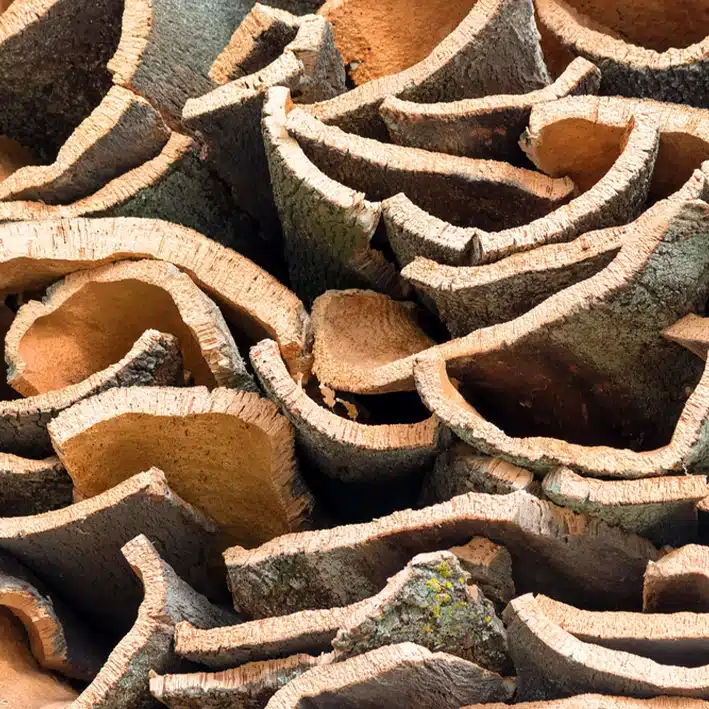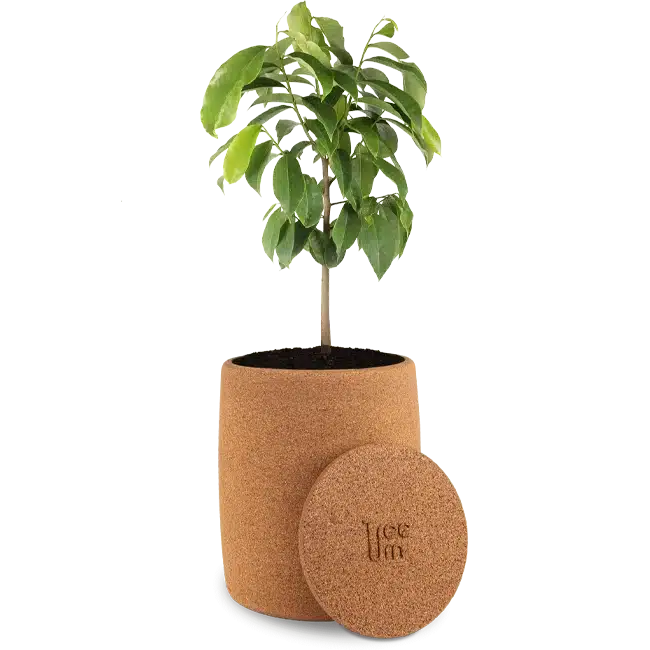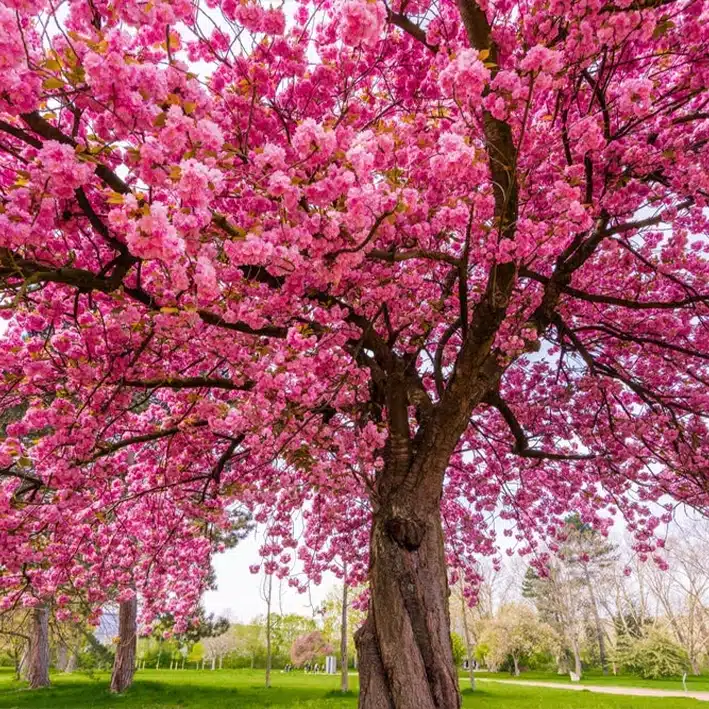Nature offers all its benefits to our cork urn
Made from Cork a Natural Material
Cork is the bark of a tree, the cork oak. This species is typical of the western Mediterranean region.
It has innate and unique characteristics: strong and light, insulating, waterproof while retaining a slight porosity, elastic and compressible, fireproof and hypoallergenic.
Thanks to its natural hygrometric regulating effect, it maintains good humidity, as well as resistance to antifungals and mold.
Its structures do not provide a nutrient environment for fungi and mold, nor do they create the conditions necessary for colonization.
Cork, a natural material with exceptional properties used in prestigious industries that combines performance, elegance, and sustainability, making it an ideal choice for eco-conscious memorials.
Above all, cork is 100% natural, renewable and biodegradable.
Concept
Tree-Urn is an eco-friendly innovation that transforms death into a new form of life. Made from agglomerated cork, this urn preserves and seals the ashes of your loved one.
Its ingenious system of cork compartments allows the tree’s roots to spread through the urn, absorbing the essential nutrients contained in the ashes to promote the tree’s growth. Other than watering, no further maintenance is required.
Once the urn is buried and the tree reaches a certain maturity, the roots will extend into the soil while the urn naturally decomposes over time.
The Tree-Urn can be kept close to you, like a traditional urn, until you are ready to plant the tree. This creates a living, soothing space of remembrance for reflection.
Tree-Urn symbolizes the beauty of the life cycle, where every end can mark a new beginning. It is a tangible way to leave a positive mark on the earth, creating a true symbiosis between human memory and nature.
The Choice of the Tree
Choosing a tree to accompany a Tree Urn is a deeply meaningful act. Across cultures, the tree symbolizes life, growth, and continuity.
Each tree carries its own symbolism — an oak may represent strength, while a willow reflects sensitivity — creating a personal link between the deceased and nature, and offering a sense of symbolic immortality.
As it grows, the tree becomes a living memorial, a peaceful place where loved ones can gather and feel connected. Watching it thrive can also bring comfort, reminding us that life continues in new forms.
This choice honors life, supports the environment, and offers lasting serenity.
Note: The tree is not included with the Tree Urn; you can select your preferred species from your local nursery.
Where to Bury the Urn with the Tree?
An Explanatory Guide
Planting a Tree Urn is a beautiful way to honor a loved one while contributing to environmental preservation. Here is a guide to suitable locations for this practice.
1. Private Properties
Family Garden
- Advantages:
- Emotional proximity to the deceased.
- Full control over the maintenance of the tree.
- Considerations:
- Ensure the chosen tree is suitable for the local climate.
- Check municipal regulations regarding the planting of funeral urns.
Private Land
- Advantages:
- Privacy and tranquility.
- Ability to choose a meaningful location.
- Considerations:
- Obtain the landowner’s permission.
- Comply with local regulations.
2. Private Forests and Woodlands
Private Nature Reserves
- Advantages:
- Contribute to forest conservation.
- Create a peaceful place for remembrance.
- Considerations:
- Check the reserve’s policies regarding biodegradable urns.
- Choose a native tree to support the local ecosystem.
3. Cemeteries and Memorial Gardens
Public Cemeteries
- Advantages:
- Dedicated spaces for memorial trees and urns.
- Regular maintenance of the site.
- Considerations:
- Fees associated with the plot.
- Restrictions on the types of trees that can be planted.
Memorial Gardens
- Advantages:
- Sites specifically designed for natural commemoration.
- Often equipped with memorial plaques.
- Considerations:
- Inquire about the types of trees allowed.
- Potential additional costs.
4. Public and Community Spaces
Municipal Parks
- Advantages:
- Accessibility for friends and family.
- Beautification of public spaces.
- Considerations:
- Obtain permission from local authorities.
- Adhere to park-specific rules.
Community Land
- Advantages:
- Creates a legacy for the community.
- Opportunity to participate in urban greening initiatives.
- Considerations:
- Submit an official request to the municipality.
- Choose tree species compatible with the urban environment.
Conclusion
Planting an urn containing a tree is a profoundly meaningful and environmentally respectful gesture. By carefully choosing the location and adhering to local regulations, you can create a lasting and beautiful tribute to your loved one. Do not hesitate to contact local authorities or conservation organizations for advice and necessary permits.
A young Tree for Optimum Development
Choosing a young tree instead of a seed is a strategic decision.
Ashes provide useful mineral elements to plants, mainly calcium, potassium, magnesium, phosphorus and trace elements and are therefore an excellent natural fertilizer. However, ashes have a high alkaline pH, generally between 10 and 12, which makes them incompatible with seeds or seedlings.
Partition Regulation System: Our regulation system, ensured by the Partition piece, offers several technical advantages:
1. Progressive Water Drainage:
- Water gradually flows from the upper part of the roots to the lower part containing the ashes.
- Water acts as a reactive agent, reducing the pH of the ashes by dissolving the alkaline ions present in them.
- Then, the water drains from the base of the urn into the soil, gradually carrying away the excess alkalinity.
2. Progressive Access to Ashes:
- The Partition regulation system ensures the roots have progressive access to the ashes over several months.
- This regulation prevents an excess of natural fertilizer, thereby avoiding any risk of the tree wilting.
3. Soil pH Correction:
- If, as your plants grow, you notice an abnormal increase in yellowed leaves, this may indicate that the soil still has a high alkaline pH. To rebalance the pH of the ashes, it is recommended to water abundantly for a few days.
Where to Bury the Urn with the Tree?
An Explanatory Guide
Planting a Tree Urn is a beautiful way to honor a loved one while contributing to environmental preservation. Here is a guide to suitable locations for this practice.
1. Private Properties
Family Garden
- Advantages:
- Emotional proximity to the deceased.
- Full control over the maintenance of the tree.
- Considerations:
- Ensure the chosen tree is suitable for the local climate.
- Check municipal regulations regarding the planting of funeral urns.
Private Land
- Advantages:
- Privacy and tranquility.
- Ability to choose a meaningful location.
- Considerations:
- Obtain the landowner’s permission.
- Comply with local regulations.
2. Private Forests and Woodlands
Private Nature Reserves
- Advantages:
- Contribute to forest conservation.
- Create a peaceful place for remembrance.
- Considerations:
- Check the reserve’s policies regarding biodegradable urns.
- Choose a native tree to support the local ecosystem.
3. Cemeteries and Memorial Gardens
Public Cemeteries
- Advantages:
- Dedicated spaces for memorial trees and urns.
- Regular maintenance of the site.
- Considerations:
- Fees associated with the plot.
- Restrictions on the types of trees that can be planted.
Memorial Gardens
- Advantages:
- Sites specifically designed for natural commemoration.
- Often equipped with memorial plaques.
- Considerations:
- Inquire about the types of trees allowed.
- Potential additional costs.
4. Public and Community Spaces
Municipal Parks
- Advantages:
- Accessibility for friends and family.
- Beautification of public spaces.
- Considerations:
- Obtain permission from local authorities.
- Adhere to park-specific rules.
Community Land
- Advantages:
- Creates a legacy for the community.
- Opportunity to participate in urban greening initiatives.
- Considerations:
- Submit an official request to the municipality.
- Choose tree species compatible with the urban environment.
Conclusion
Planting an urn containing a tree is a profoundly meaningful and environmentally respectful gesture. By carefully choosing the location and adhering to local regulations, you can create a lasting and beautiful tribute to your loved one. Do not hesitate to contact local authorities or conservation organizations for advice and necessary permits.
A young Tree for Optimum Development
Choosing a young tree instead of a seed is a strategic decision.
Ashes provide useful mineral elements to plants, mainly calcium, potassium, magnesium, phosphorus and trace elements and are therefore an excellent natural fertilizer. However, ashes have a high alkaline pH, generally between 10 and 12, which makes them incompatible with seeds or seedlings.
Partition Regulation System: Our regulation system, ensured by the Partition piece, offers several technical advantages:
1. Progressive Water Drainage:
- Water gradually flows from the upper part of the roots to the lower part containing the ashes.
- Water acts as a reactive agent, reducing the pH of the ashes by dissolving the alkaline ions present in them.
- Then, the water drains from the base of the urn into the soil, gradually carrying away the excess alkalinity.
2. Progressive Access to Ashes:
- The Partition regulation system ensures the roots have progressive access to the ashes over several months.
- This regulation prevents an excess of natural fertilizer, thereby avoiding any risk of the tree wilting.
3. Soil pH Correction:
- If, as your plants grow, you notice an abnormal increase in yellowed leaves, this may indicate that the soil still has a high alkaline pH. To rebalance the pH of the ashes, it is recommended to water abundantly for a few days.




